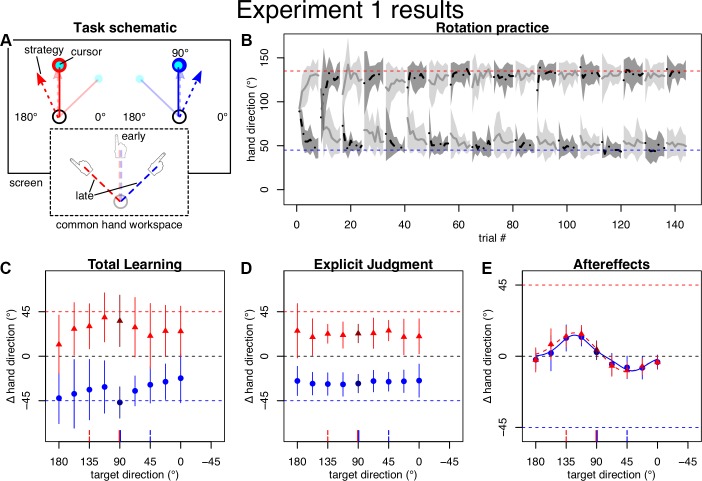Fig. 2.
Task and results of experiment 1. All angles are in degrees, with 0° falling on the x-axis and positive direction counterclockwise. Error regions and bars represent SDs. A: schematic drawing of the practice targets and approximate predictions for cursor and strategy directions (top) and movement directions in the common hand workspace (bottom) for early (transparent) and late (solid) practice, for left (red) and right (blue) visual workspace. B: mean hand directions (not baseline corrected) during practice plotted separately by the groups starting with either with left (gray) or right (black) visual workspace. Horizontal dashed lines indicate ideal compensation of the cursor rotation. On average, participants compensated the rotation well within the first few blocks. C–E: baseline-corrected average hand directions for left (red) and right (blue) visual workspace on generalization posttests. Darker color indicates the practiced target direction. Horizontal dashed lines indicate full compensation of the cursor rotation for left (red) and right (blue) visual workspace, respectively. Vertical red and blue lines at x-axis indicate direction of target (solid) and full compensation (dashed). C: participants’ total learning approached full compensation, was specific to the visual workspace, and generalized broadly across target directions. D: when tested separately, explicit knowledge reflected this cue-dependent, broadly generalizing learning. E: aftereffects, on the other hand, appeared independent of the visual workspace cue and exhibited a generalization pattern that was well fit by a sum of 2 Gaussians (solid blue and dashed red line).

